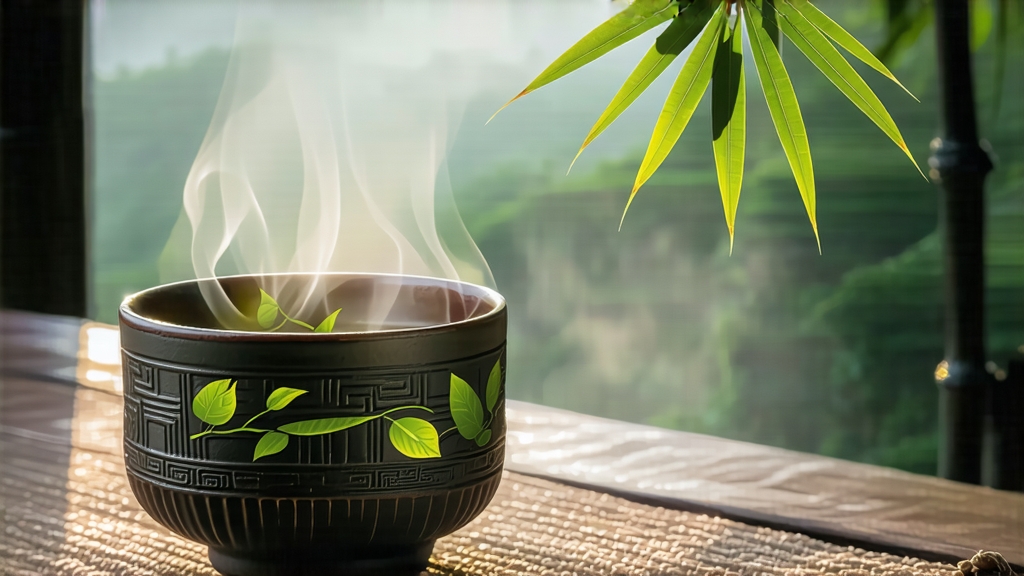
Rising like an emerald spine through the clouds of central Taiwan, the Alishan mountain range has quietly become one of the most celebrated cradles of oolong tea in the modern world. While the term “oolong” simply means “black dragon” in Chinese—a poetic nod to the dark, twisted shape of finished leaves—Alishan High-Mountain Oolong has evolved into a distinct sub-style that marries the floral lift of green tea with the honeyed depth of darker oxidized varieties. To international drinkers who equate Taiwan with bubble tea, Alishan offers a more nuanced story: one of mist, altitude, and meticulous craft that turns a single morning’s pluck into a cup that smells like orchards in first bloom.
Historical Roots in the Clouds
Tea bushes first ascended Alishan’s slopes in the late nineteenth century when the island was still under Japanese rule. Colonial agronomists, searching for a high-value crop to rival Darjeeling, noticed that elevations between 1,000 and 1,400 m slowed leaf growth so dramatically that the plants stored extra amino acids and aromatics. After Japan’s withdrawal in 1945, indigenous Tsou farmers and incoming Minnan settlers refined plucking standards, replacing the original Qingxin (Green Heart) cultivar with a hardier TTES #12, later nicknamed “Jin Xuan” for its natural milky aroma. By the 1980s, Taipei tea merchants were marketing the lot simply as “Alishan,” and the name stuck, eclipsing older labels such as “Formosa Oolong.” Today, any leaf bearing the Alishan designation must be grown within the townships of Meishan, Zhuqi, Fanlu, or Alishan proper, and must be harvested above 1,000 m—rules enforced by both farmers’ cooperatives and Taiwan’s National Tea Improvement Station.
Micro-Terroir: Why Altitude Tastes Like Gardenia
Alishan’s equatorial monsoon climate delivers 200 foggy days a year. The persistent cloud cover filters sunlight into a soft, diffused glow, prompting the bush to synthesize more linalool and geraniol—the same volatile compounds found in gardenias and citrus blossoms. Night-time temperatures can drop 10 °C below daytime highs, slowing respiration and locking sugars inside the leaf. The result is a naturally sweet liquor with almost no astringency, a trait that cuppers translate into the shorthand “high-mountain qi.” Soil is equally decisive: crumbling shale rich in iron and porphyry drains quickly, forcing roots to dive deep for moisture and minerals. The stress concentrates catechins and amino acids, giving Alishan oolong its signature creamy body that lingers like melted white chocolate on the sides of the tongue.
From Leaf to Dragon: The Craft of Partial Oxidation
Although every estate guards proprietary tweaks, the processing choreography follows a centuries-old Fujian template refined in Taiwan’s alpine conditions.
- Pluck: Only the “three-leaf and a bud” standard is accepted, picked before 10 a.m. while dew still glistens. Larger leaves contain the polyphenols necessary for complex oxidation without excessive bitterness.
- Solar Wither: Leaves are spread 3 cm thick on bamboo trays and sun-withered for 20–40 min, depending on cloud density. UV light triggers enzymatic activity that later translates into peachy top notes.
- Indoor Wither & Tossing: Moved onto waist-high racks, the leaves rest under 22 °C air conditioning while artisans toss them in rotating drums every hour for 6–8 h. Edge bruising jump-starts oxidation, turning the leaf rim a russet bronze while the center stays jade green—oolong’s trademark “green belly with red skirt.”
- Kill-Green: A 260 °C drum roaster halts oxidation at 20–30 %, higher than green tea but far lower than black. The short blast locks in floral aromatics and sets up the “ring” that connoisseurs listen for when tapping dried leaf against porcelain.
- Rolling & Balling: While still warm, leaves are wrapped in cotton cloth and fed into hydraulic rollers that compress them into tight hemispheres. Repeated unwrap-rewrap cycles (up to 60 times) shear cell walls, coaxing oils to the surface and giving Alishan its iconic pellet shape.
- Drying & Sorting: A 90 °C conveyor oven reduces moisture to 3 %, after which stems and yellow flakes are